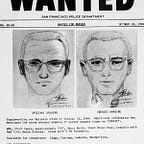The Mary Celeste
On a crisp December morning in 1872, the Canadian brigantine Dei Gratia sailed through the calm Atlantic waters. Captain David Morehouse, a seasoned mariner, stood at the helm as the ship glided with purpose, its crew’s spirits lifted by the rhythm of the waves.
In the distance, an unsettling sight emerged — the silhouette of another vessel, a peculiar brigantine flying the American flag. Its erratic trajectory hinted at trouble, and seasoned seafarers aboard the Dei Gratia sensed something amiss. No lifeboat was in sight, a crucial lifeline for distressed crews. As they approached, it became clear this was no ordinary encounter.
The mysterious vessel was none other than the Mary Celeste, a 103-foot brigantine built in Spencer’s Island, Nova Scotia, and launched in 1861. It had seen its share of voyages, but none would be as infamous as this.
The Mary Celeste was under the command of Captain Benjamin Spooner Briggs, an experienced mariner known for his steady hand and calm demeanor. With him were his wife, Sarah Elizabeth Briggs, and their two-year-old daughter, Sophia Matilda. The crew consisted of eight able seamen, a skilled group of men who knew the ship like the backs of their hands.
The Mary Celeste’s journey had begun in New York City on November 7, 1872. Laden with a cargo of industrial alcohol bound for Genoa, Italy, the ship set sail under the ownership of a consortium led by James H. Winchester. Its course was set for the Mediterranean, a voyage of great promise.
However, as Captain Morehouse and his men boarded the Mary Celeste, they found a deserted vessel, a ghostly apparition. Not a soul remained, and no trace of the captain, his family, or the crew lingered. The eerie silence was broken only by the creaking of timbers and the gentle lapping of waves against the hull.
Captain Morehouse’s keen eyes scanned the deck. What he saw would haunt him. The Mary Celeste was in impeccable condition — her sails taut, her helm secured, as if the crew had just stepped away for a moment’s respite. The cargo hold, bearing maritime treasures, lay untouched.
“The vessel was in good seaworthy condition, and the cargo was intact,” Morehouse testified later. “The crew’s personal belongings were undisturbed. However, the ship’s log was missing.”
Oliver Deveau, Chief Mate of the Dei Gratia, stood beside his captain, his thoughts as turbulent as the sea below. He described what they found:
“When we boarded the Mary Celeste, we found the vessel in seaworthy condition. Sails set, helm lashed, cargo intact, and personal belongings untouched.
“We searched from top to bottom but found no sign of the crew. The ship’s log was also missing. The Mary Celeste was ready to sail, yet her crew had vanished.”
As the mysteries deepened, the crew of the Dei Gratia sailed the Mary Celeste to Gibraltar, where they reported the incident to the authorities. The fate of the Mary Celeste’s captain and crew would become one of the most enduring and perplexing maritime puzzles in history.
Various theories have emerged to explain their disappearance:
Mutiny: Some believe the crew mutinied against Captain Briggs, throwing him and his family overboard. However, no evidence supports this theory, as the crew’s personal belongings were left undisturbed, suggesting they didn’t leave voluntarily.
Piracy: Others suspect a pirate attack, yet the ship’s cargo remained untouched, and there were no signs of struggle.
Explosion: Some propose an explosion, but the ship showed no damage or signs of an explosion.
Panic: There’s a theory of panic due to perceived threats like sea monsters or pirates, but no evidence supports this theory either.
Other theories include:
Alcohol fumes: The fumes from the ship’s cargo of alcohol might have sickened and disoriented the crew, leading to abandonment. But their undisturbed belongings contradict this idea.
Natural disaster: A natural disaster like a hurricane or tsunami could have led to abandonment, yet no signs of such an event were found on board.
Supernatural causes: Some even suggest otherworldly forces, like ghosts or UFOs, but there’s no evidence to support these claims.
The Mary Celeste, with her mysteries intact, became an enduring legend of the sea. After her arrival in Gibraltar, she changed hands several times, sailing under different owners and names. Eventually, her legacy faded into obscurity as she continued her life as a working vessel. Abandoned and repurposed, she drifted into history, leaving behind the unanswered question of what transpired on that fateful December day in 1872.
